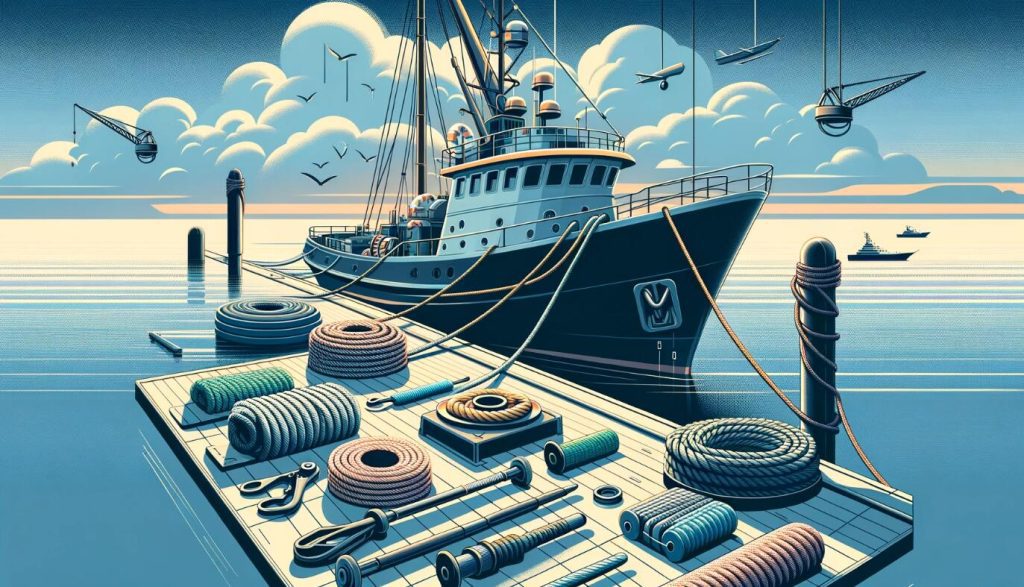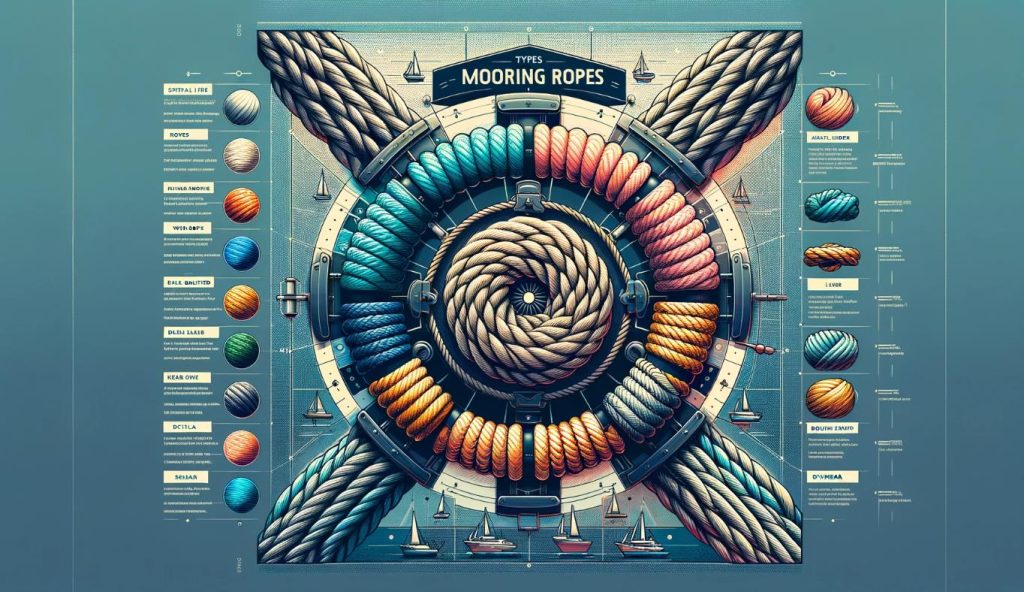In the realm of maritime operations, the safety and stability of a vessel lie significantly in the choice and use of mooring ropes. These vital components ensure that ships are securely anchored to docks, buoys, or anchor points, preventing them from drifting due to wind, waves, or currents. With the vast array of options available, selecting the right mooring rope is not just about fulfilling a necessity; it’s about investing in the safety, efficiency, and longevity of maritime endeavors.
This article aims to navigate the complexities of mooring ropes, shedding light on the different types available, their specific applications, and why choosing high-quality ropes is paramount for maritime safety. By understanding the nuances of each rope type—be it synthetic fiber, natural fiber, or wire ropes-mariners can make informed decisions that significantly impact the safety and operational efficiency of their vessels.
As we delve into the world of mooring ropes, remember that the right choice not only secures your vessel but also safeguards your peace of mind in the challenging maritime environment. Join us as we explore how to select the perfect mooring rope, ensuring your maritime operations are as secure as the knots that hold your vessel in place.

Understanding Mooring Ropes: The Lifeline of Maritime Operations
Mooring ropes, an essential component of maritime safety, serve the critical function of securing vessels to docks, buoys, or anchoring points. Their role cannot be overstated; they are the lifeline that ensures vessels remain stationary amidst the unpredictable forces of nature. This section delves into the factors critical to selecting a mooring rope, emphasizing the need for a choice that guarantees safety and reliability.
The Significance of Mooring Ropes
Mooring ropes do more than just tie a vessel to a point; they absorb the stresses and strains exerted by wind, currents, and waves, providing a stable environment for operations on and around the vessel. The selection of a mooring rope is, therefore, a decision that directly impacts the safety of the crew, the vessel, and its cargo.
Factors Influencing Mooring Rope Selection
- Strength: The foremost consideration is the rope’s ability to withstand the load and stress it will be subjected to. The strength of a mooring rope ensures that it can bear the vessel’s weight and the dynamic forces of marine conditions.
- Abrasion Resistance: The marine environment is harsh. Ropes must endure constant friction, contact with rough surfaces, and other forms of wear and tear. High abrasion resistance extends the lifespan of mooring ropes, making them a cost-effective solution.
- UV Resistance: Prolonged exposure to sunlight can degrade many materials. UV-resistant ropes maintain their integrity and strength over time, even under the relentless sun.
- Water Absorption: Ropes that absorb less water are less prone to becoming heavier or weakening. Low water absorption is particularly important for maintaining rope performance and durability.
- Elasticity: A certain degree of elasticity allows mooring ropes to absorb shocks, such as those from waves or sudden movements. This elasticity prevents the rope from snapping under pressure, ensuring the vessel’s safety.
Understanding these factors is crucial for anyone involved in maritime operations. The right mooring rope not only secures the vessel but also contributes to the safety and efficiency of maritime activities.
As we explore the different types of mooring ropes in the following sections, keep these factors in mind. They are the criteria that will guide you in making an informed decision, ensuring your choice of mooring rope is one that you can rely on in any situation.

Types of Mooring Ropes: Choosing the Best Fit for Your Maritime Needs
In the diverse world of maritime operations, the choice of mooring rope is critical for ensuring the safety and stability of vessels under various environmental conditions. Each type of mooring rope has unique characteristics that make it suitable for specific situations. Understanding these differences is key to selecting the right mooring rope for your needs.
Synthetic Fiber Ropes
- Polyester: Known for its strength and durability, polyester is resistant to UV degradation and abrasion, making it a reliable choice for long-term mooring. Its low stretch properties ensure minimal elongation under load, providing stability in most conditions.
- Nylon: Valued for its elasticity, nylon can absorb shock loads effectively, making it ideal for situations where vessels are subject to significant movement. However, it is susceptible to UV damage and loses strength when wet.
- Polypropylene: This lightweight rope floats and is resistant to water absorption and most chemicals, making it suitable for temporary mooring and applications where quick retrieval is necessary. It has moderate strength but lower UV resistance compared to polyester and nylon.
Natural Fiber Ropes
- Manila: Made from the fibers of the abacá plant, Manila rope is biodegradable and has good resistance to saltwater degradation. It’s less durable than synthetic ropes but preferred for its environmental friendliness and traditional appearance.
- Sisal: Similar to Manila, sisal is a natural fiber rope with good resistance to salt water but lower strength and durability. It’s often used for decorative purposes or in applications where synthetic fibers are not preferred.
Wire Ropes
Composed of multiple steel wires twisted into strands, wire ropes offer exceptional strength and durability. They are ideal for heavy-duty mooring, especially in harsh marine environments, but require careful handling to prevent injury from broken wires.
Specialty Ropes
- Double Braided Lines: These ropes feature a braided core and a braided cover, providing extra strength and protection. They are versatile, easy to handle, and suitable for various mooring tasks.
- Kevlar Lines: With strength five times that of steel, Kevlar ropes offer exceptional durability and resistance to stretching. They are used in high-stress applications where minimal elongation is critical.
- Dyneema Lines: Known for their high strength-to-weight ratio, Dyneema ropes are extremely strong, durable, and resistant to abrasion. They are ideal for performance-critical applications requiring strength without weight.
Conclusion
Selecting the right mooring rope involves considering the specific needs of your vessel and the conditions it will encounter. Whether you need the shock-absorbing properties of nylon, the durability of wire ropes, or the lightweight and high strength of Dyneema lines, understanding the unique attributes of each rope type will guide you in making the best choice for safety and efficiency in your maritime operations.
Remember, the right mooring rope not only secures your vessel but also plays a crucial role in the safety of maritime activities. For those looking to purchase high-quality mooring ropes, consider exploring the options available at “thispowerrope.com,” where safety and durability are paramount.
